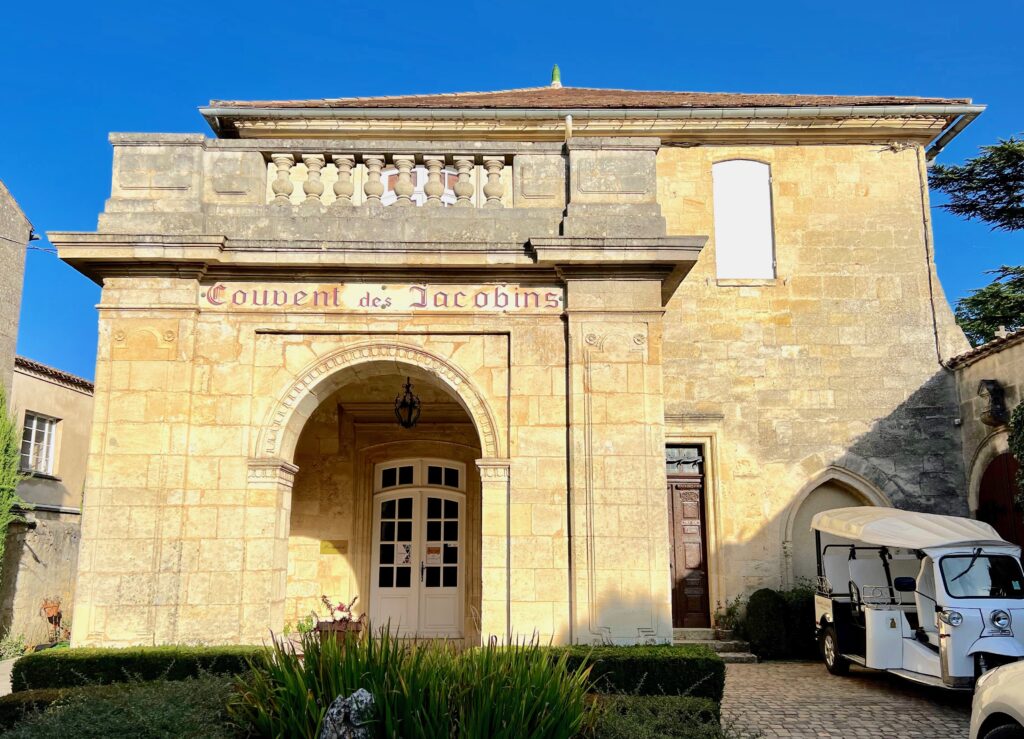
Couvent des Jacobins has just celebrated their 120 year anniversary since the Jean family acquired the estate in 1902. As only one of two Grand Cru Classe located within the historic walls of Saint-Emilion, the estate boasts a longstanding history of producing estate wines, but Monks were the early vintners in this monastery, originally crafting more simple wines from the Merlot grapes they cultivated.
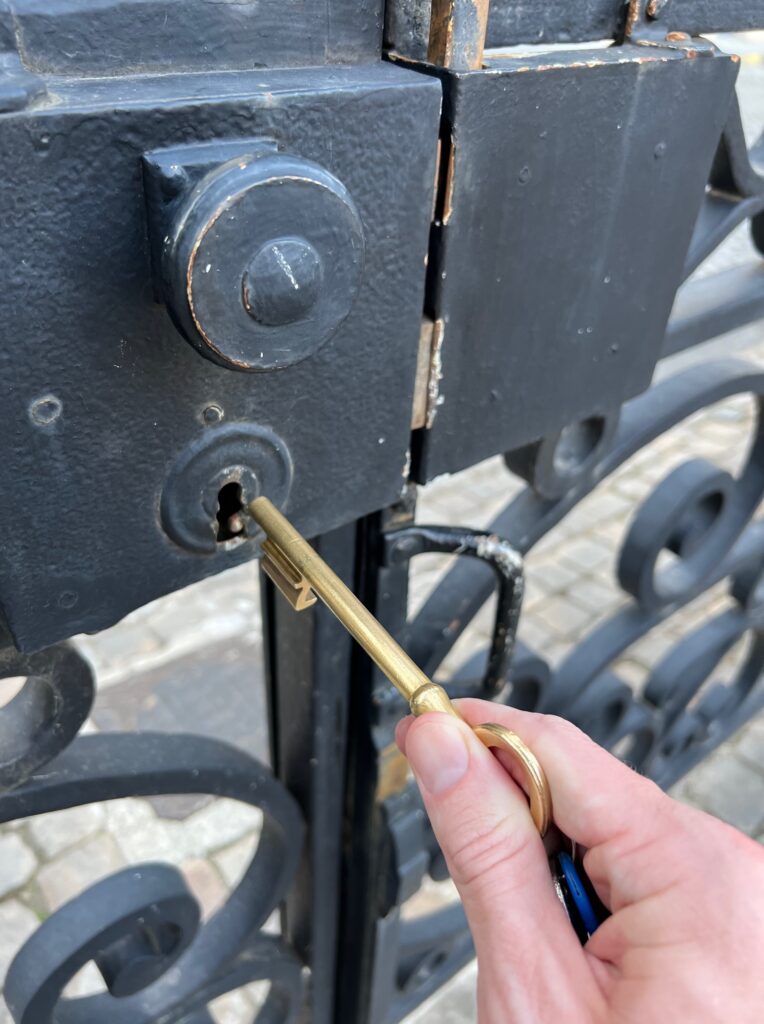
At that time, there were just two hectares of vineyards, having since expanded to a total of 10.5 hectares of vineyards located entirely within the historic city walls of Saint-Emilion. Of the 10.5 hectares, .5 are planted to Petit Verdot, one Cabernet Franc and the remaining 9 hectares Merlot, the variety most associated with Saint-Emilion.
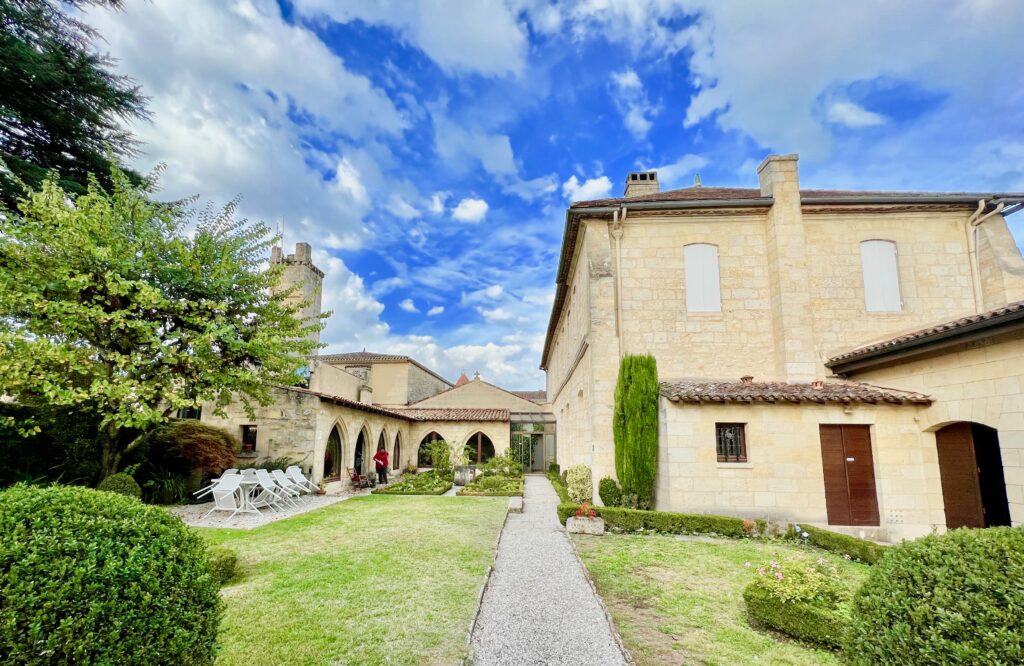
Today, the estate is in the good hands of fourth generation owner Xavier Jean, who considers himself more of a steward and caretaker rather than an owner.
His focus is to look after the estate for the next generation, charged with the task of balancing preserving its history while making the improvements necessary to stay relevant and increasingly important, conscious of the environment. For example, after an arduous four year long certification process, the winery is now fully certified organic as of the 2020 vintage.
I last visited the estate in 2018 and was impressed not just by the history and beauty of the property, but the quality of the wines and extensiveness of the cellars, with vintages dating back to 1947! Needless to say, I jumped at the opportunity to visit again and spend some time with the winemaker as he worked his magic in the cellar.
Denis Pommarede, who has been Winemaker at Couvent des Jacobins for an impressive 26 years, is most at home in the cellar, embracing a hands-on approach to his winemaking. While discussing the nuances of fermenting lots in barrel vs tank, closely monitoring fermentation temperatures and being ready to adapt when necessary, and strictly doing manual pump-overs, he draws the analogy that he is more like a Chef who works in a kitchen, rather than a “business chef” who travels from restaurant to restaurant directing staff to execute their vision.

Denis is not afraid to get his hands dirty. While discussing his reasoning for barrel fermenting specific lots versus fermenting in tank, a member of his team calls for his assistance, and Denis manages to fix an electrical issue causing a pump to fail with his bare hands in a matter of minutes.
He explains to me that while learning to make wine in Hungary, we didn’t have much to work with. “We worked with what we had”, he tells me, and I’m convinced he has learned a thing or two along the way. He also encourages his team to be open to making changes when necessary to achieve a higher-quality wine, which is his ultimate goal. I had the opportunity to ask him a few questions…
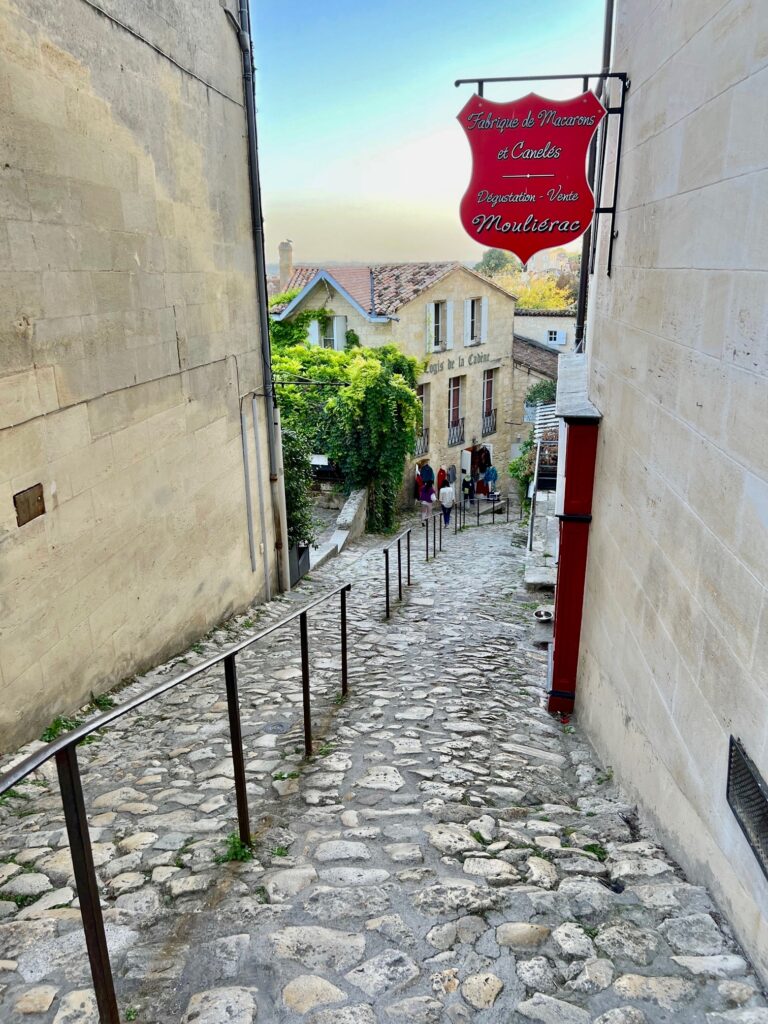
What are you working on today in the cellar?
We are working on the ecoulage, meaning the racking of the wines after the fermentation. We macerate the juice for 10-15 days after the fermentation, which can be up to 45 days. During this process we are separating the juice from the cap separating the wines by lot (for example, 4 lots of Merlot) while allowing the juice to undergo malolactic fermentation before moving the juice to barrels.
You have been the Winemaker here for 26 years! What makes the wines of Couvent des Jacobins special?
The regularity and the quality of Couvent des Jacobins. When the winemaker remains for so long, the winemaker knows exactly vintage by vintage the terroir, type of soil, and quality of vines. I have also planted the new vines and understand the potential of the terroir and new vines. What makes our wines special is the quality of Couvent des Jacobins, resulting from a combination of the quality of the terroir and my experience here.
From your vineyards at Couvent des Jacobin, is there a particular variety that you are most fond of?
The Merlot, because of the typicity for Merlot and it does so well in Saint-Emilion. Merlot is more fresh and fruity than Cabernet Sauvignon. But as the climate changes and the weather keeps getting warmer it can be difficult for Merlot, so we have to adapt our blends. It used to be Saint-Emilion wines were 90% Merlot, but now it is more like 70% as we adapt to rising temperate. Now we utilize Petit Verdot to contribute to the freshness and the acidity that we want for our wines.
Many consumers fear that some Bordeaux producers are embracing a New World winemaking style. How would you describe your winemaking philosophy?
We aren’t extracting a lot during the vilification. We just control the process and nature gives you the potential. We try to do our best job to achieve the quality of Couvent des Jacobins, and we work hard to preserve the potential of the of the berries as that is where the quality comes from, not from technology. If you have good maturity of the skins and good weather, you don’t have much to do, nature does it for you. Our goal is to preserve the potential of the vines, 80% of the work is done in the vineyards.
What are your thoughts on the 2022 vintage?
Normally harvest begin around September 26th, but this year it began on September 6th which is quite early. We have had a dry growing season with a lot of sunshine, and the wines will benefit from good concentration and quality as a result.
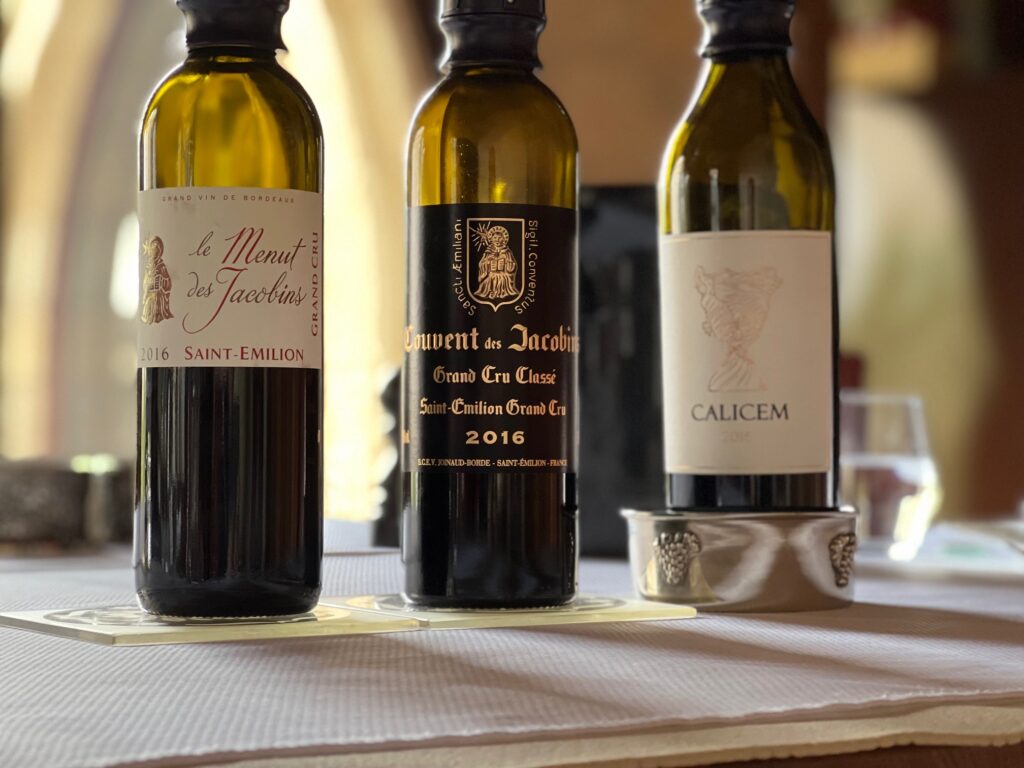
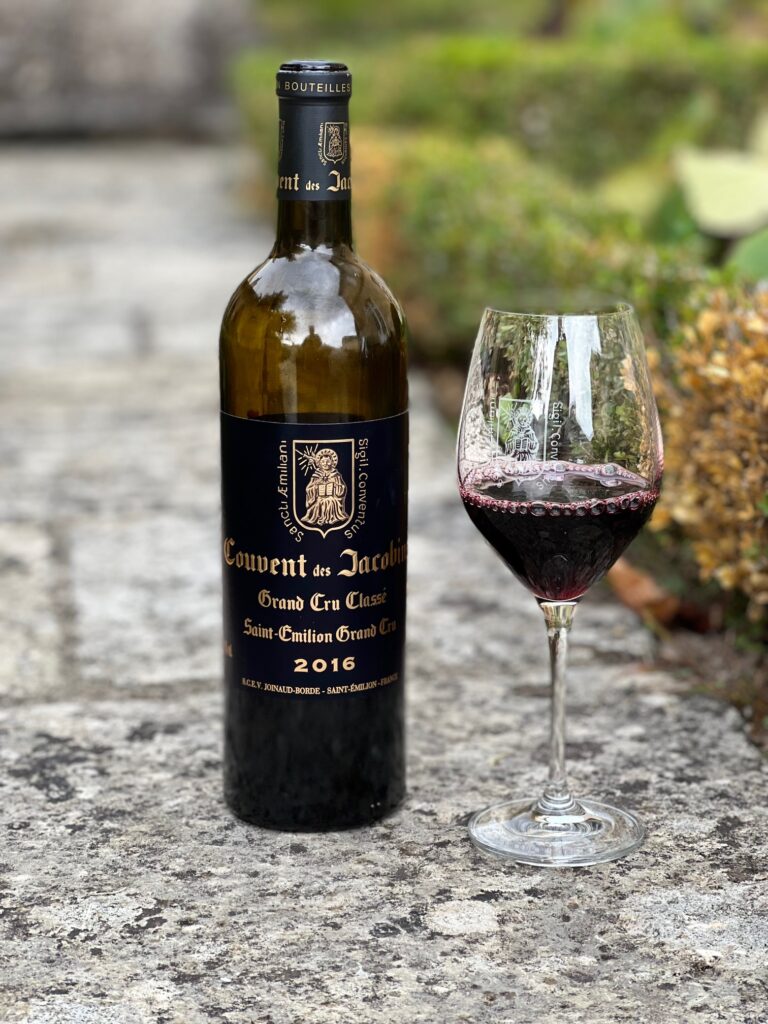
Le Menut de Jacobins 2016: Roughly 15 to 20% of the production goes into the second label each year. Softer and considerably more open-knit than the grand vin, with beautiful strawberry and licorice flavors underscored by hints of forest floor. Finishes with good moderate length and supple tannins.
Couvent des Jacobins 2016: 5% PV, 11%CF, 86% Merlot. Fresh and pure on the nose with aromas of black cherry and pomegranate laced with mint and licorice and subtle hints of strawberry. Wonderfully fragrant. Builds on the palate with fine but intense structure, becoming spicy with mouthwatering acidity maintaining freshness and balance. Superb!
Calicem 2016: 100% Merlot from 60 year old vines. Pure and soft nose. Aromas of strawberry and cherry are underscored by subtle suggestions of roasted meat. On the palate, it’s structured but pillowy soft in texture, with finely grained tannins providing the framework while hints of toast and licorice linger on the lengthy finish.

A visit and tour of these historic cellars is a must for anyone visiting Saint-Emilion, and now it’s easier than ever. Couvent des Jacobins was one of the first wineries to open their doors for tours and tasting post-pandemic, welcoming more than 800 visitors to their estate this year alone.
While most wineries in the region remain open only during the busy summer season, they have decided to stay open year-round, with the exception of a much-needed respite in January. And if you’re unable to visit, you’d be rewarded for asking your local wine merchant to bring in a case of their wine. It’s unlikely to be the last.

Welcome back, thanks for another informative & entertaining posts!
Thank you for your support! It’s nice to be back! 🙂
loved our visit there and so happy you were able to return. I have some very nice Couvent des Jacobins in my cellar sleeping nicely.